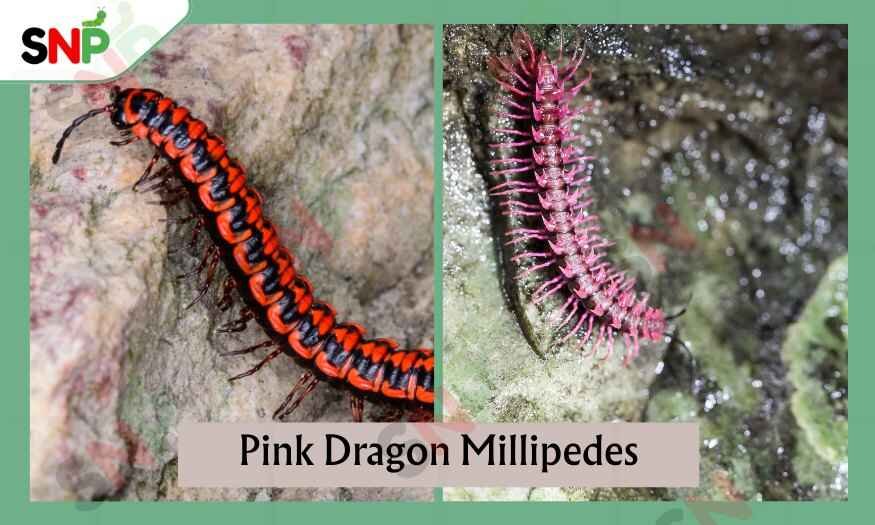Dragon Millipedes: Explore the Unique Pest!

The dragon millipedes is one of the most visually striking and attractive in the natural world. Its lively colors and the horned, dragon-like texture are the reasons why the millipede was loved by the people. Even though it may look scary, the dragon millipede is an example of how nature employs color to survive.
All About dragon millipedes
The dragon millipedes are so unique in their shapes. The spiny projections they carry on their bodies make them look like dragons. The majority of the species are of small size, with the length being no more than 3 centimeters (1.2 inches). They have low stature, and each of the segments have lateral folds which produce a shape similar to a dragon.
The best thing about a dragon millipede is that it can produce a poison called hydrogen cyanide for its defense. This poisonous substance is used to scare predators and at the same time, it makes the millipede smell like almonds.
While many species of millipedes are brightly colored, those that live in caves, on the contrary, are losing their color. Some even appear pale or completely transparent.
Pink Dragon Millipede

One of the species of millipedes, the Pink Dragon Millipede (Desmoxytes purpurosea) is the most popular. It is also the most attractive one genetically. First found in Thailand, this of millipede won recognition from many other lands because of the incredibly bright pink body.
The pink color of the millipede tells the predators not to approach it as it has a protective device inside – the poison that it releases when it is being attacked by the predators.
The Pink Dragon Millipede is about 3 centimeters long, it has a spiny, flattened body that makes it look like a miniature dragon. Mostly, it is seen on the ground on leaf litter, especially after it rains. And no aggressive behavior is often reported as its main trait.
In most cases, the millipede will not attack you even if it looks like that! It is usually hiding and trying to avoid confrontation through chemical defenses.
Places They Are Found In
Dragon millipede species are predominantly from Southeast Asia with the highest number coming from countries like Thailand, Malaysia, Myanmar, and southern China. An example is The Pink Dragon Millipede. There were other species in otjer the parts of the world like India, Sri Lanka, etc can be the habitat of as well as the result of the unintentional transportation by human beings.
The habitation of the vibrant rainforests and damp leaf litter and decaying wood where most of the dragon millipede species are found favors the life of those insects. Some species have developed cave-dwelling characters to an extent where they have evolved very long legs and antennae or reduced the colors or completely lost the colors.
Are They Dangerous?
The dragon millipede is not regarded as a danger to the human race, it is not to say that they are not able to spray with a toxic chemical liquid as a means of its natural defense. If a human being gives it a feeling of being threatened, it naturally secretes hydrogen cyanide, a toxic chemical that is used as a warning to its aggressors and is also the source of the almond smell usually associated with millipedes. This secretion is toxic; however, the dosage the millipede issues out is of no harm to healthy adults when they come into a brief touch. Still, it is highly recommended that one should avoid touching the millipedes without any equipment, particularly if you have cuts or sensitive skin, and always wash your hands thoroughly after any contact.
No children and animals should try to handle these millipedes. Why? Because they are so small and their bodies are so thin, therefore they can easily get killed. Another reason is that their chemical defenses could cause a mild irritation.
Dragon Millipedes Conclusion
The dragon millipede definitely stands as a prime example of nature’s creativity. It has a unique body structure, and chemical defenses, to survive in a region. You may be fascinated by the radiant pink color of the Pink Dragon Millipede. These millipedes give you a sneak peek at the natural world’s amazing things. With the proper care and treatment, these animals are harmless to people, and a popular choice among exotic pet lovers. If you ever come across a dragon millipede, take your time to glorify its beauty from a close distance
Related Posts
Do Millipedes Bite Humans? Discovering the Truth
Introduction To Do Millipedes Bite Human? Did you ever see a long, multi-legged creature moving on your floor or crouched in a wet corner? You must have wondered, do millipedes bite humans? They may look scary at first sight, but the truth is not that scary. Here in this blog, we will reveal whether millipedes […]
Bumblebee Millipede: The Complete Guide for American Homes
Are you a person who once caught the image of a very rude and yellow-and-black living being in your backyard, or even lurking on your floor? If so, you have probably seen the bumblebee millipede. This amazing millipede has appealed to nature enthusiasts as well as the individuals who are concerned with household bugs in […]
Places Where You Can Find American Giant Millipedes
As you walk around woodlands, parklands, or even in your backyard in the eastern United States, it is easy to imagine that you will step on a long, many-legged beetle crawling laboriously along the ground. If you have ever stopped and wondered what an American giant millipede looks like, you are not alone. These amazing […]
Quick Link
Services
